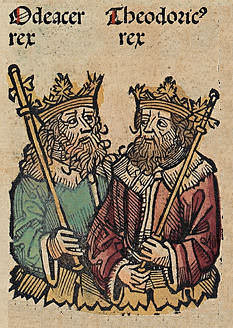
Theodoric the Great (l. c. 454-526 CE, r. 493-526 CE, also known as Flavius Theodoricus) was the king of the Ostrogoths who, at the encouragement and direction of the Roman emperor Zeno, invaded Italy, deposed King Odoacer, and ruled over a kingdom of Romans and Goths from 493-526 CE. He was originally named Dietrich (or Diederich) and passed into German legends under the name Dietrich von Bern, the hero of many tales in Middle High German literature, although this identification has been challenged by a number of scholars.
He was an Arian Christian, and his tolerance for Trinitarian Christianity in spite of the tension between the two groups, as well as his careful policies regarding the rights of his subjects, made him an effective ruler until his later years. Increasingly surrounded by enemies, he began to suffer from acute paranoia and engaged in persecutions of high-ranking Trinitarians at his court, such as the philosopher Boethius and Boethius' father-in-law Symmachus. His mausoleum at Ravenna still stands in the present day, and he is remembered as a sympathetic, wise, and just ruler.
Early Life & Rise to Power
Theodoric was born c. 454 CE, the son of King Thiudimir of the Ostrogoths and one of his concubines. He was baptized as Dietrich but, at the age of eight, was sent to Constantinople, seat of the Eastern Roman Empire, as a hostage to guarantee his father's compliance with a treaty between the Romans and the Goths, and his name was romanized to "Theodoric". He remained at court, becoming educated in Graeco-Roman values, for ten years under the protection of the emperor Leo I (reigned 457-474 CE) and then the emperor Zeno (reigned 474-475 CE, 476-491 CE). He never learned to read or write but adopted Roman cultural norms and was later described by the scribe Sidonius Apollinaris as highly refined in both his private and public life.
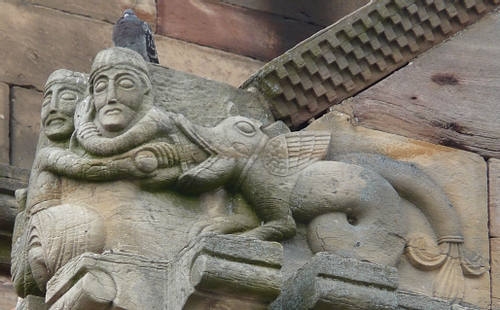
According to Jordanes (6th century CE) he was of the Amal family who had ruled over the Goths since ancient times and were of royal blood (though this claim, like much of Jordanes' work, has been challenged). He was an avid hunter and an excellent shot with the bow. Further, he seems to have shown an early talent for commanding men. He was made Master of Soldiers under Zeno in 483 CE and, a year later, was elected Consul and given the name Flavius Theodoricus.
These rewards were given for his service to the empire in keeping at bay another Ostrogothic leader named Theodoric Strabo ("the Squinter") who harassed the empire when he was not fighting for its cause. Both Theodoric the Amal and Theodoric Strabo were considered kings of their respective factions of Goths and vied with each other for the greater favor of the empire while, alternately, turning and ravaging the empire's lands when they felt they were not being accorded enough respect or employment in arms. The scholar Guy Halsall writes:
Between 474 and 488 a complex merry-go-round of alliances, treachery, murder and intrigue constantly shifted the balance of power. The emperor sometimes needed Gothic support against other factions, but could not allow them to become too powerful. The Emperor Zeno, himself Isaurian but faced with rebellions by his own people, who wished to dominate the Constantinopolitan court, played the two Theodorics off against each other with some skill until in 483-484 he overplayed his hand. Strabo was killed in an accident, falling from his horse onto a spear, and in the aftermath Zeno encouraged Theodoric the Amal (whom he rewarded with considerable honours, including the consulate) to murder the Squinter's son Recitach. Rather than removing one of the problematic factions, however, this simply led to Recitach's Goths joining the Amal…Instead of two competing Gothic groups, Zeno was confronted by one large and very powerful force. (286-287)
The Italian Campaign
Following the death of Recitach and the consolidation of the Gothic forces under his lead, Theodoric was sent by Zeno against his rival General Illus, who had raised a revolt among the Isaurians in Asia Minor. Once he had defeated Illus and put down the revolt, Theodoric marched his army back toward Constantinople. Having defeated both his Gothic rivals and the Isaurians, he was now the most powerful military leader in the region and decided to take from Zeno what he felt he deserved but had not been offered: an allotment of land for his people and official recognition as their king. He began a systematic campaign against the empire and the emperor who had brought him to power. Having been raised at the court, Theodoric understood well how military might translated to political power and raided those cities and villages that he had formerly protected. Halsall writes:
The Goths threatened Constantinople and ravaged the Balkans but could not take the capital, whilst Zeno, secure behind the city's famous triple line of walls, was unlikely to drive the latter completely from his territories. A solution was required, agreeable to both parties, and found: for Theodoric's Ostrogoths to move to Italy and dispose of the "tyrant" Odoacer. In 488 the Ostrogoths took the long road west.(287)
Whether the invasion of Italy was initially proposed by Zeno or Theodoric has been disputed but, most likely, it was Zeno's solution to two pressing problems.
Odoacer (r. 476-493 CE) had been king of Italy, with Zeno's permission, since 476 CE but had increasingly been causing problems for Zeno. Odoacer had backed Illus' revolt, had annexed the region of Dalmatia with impunity, and was acting more like an independent monarch of a country than the ruler of a Roman province. Zeno needed to rid himself of Odoacer and Theodoric both, and it is thought that he considered this solution the best, as one of them was certain to kill the other and he would then have only a single problem to deal with.
Theodoric, for his part, seized on the opportunity for further military glory and, if he won, a land for his people and his own legitimate rule. He invaded Italy, ravaging the land, and encountered his first resistance from the Gepid people at the Vuka River in 488 CE. It is unknown whether they were allied with Odoacer or simply protecting their lands from invasion, but they were quickly defeated and slaughtered by Theodoric's forces. Theodoric marched on and met Odoacer's forces in battle at the Isonzo Bridge 28 August 489 CE, where Odoacer was defeated. He retreated to Verona with Theodoric in pursuit and they clashed again on 29 September 489 CE; Odoacer was again defeated. He then fled to Ravenna and prepared the city's defenses, while Theodoric continued his conquest of the country. The scholar Herwig Wolfram writes:
Theodoric's march to Italy seemed destined for a fast and decisive victory. In Milan, which Theodoric captured after Verona, secular and ecclesiastical dignitaries welcomed him as the emperor's representative. Even Odovacar's commander-in-chief, Tufa, and large numbers of the defeated army joined the victor. (281)
Trusting Tufa's gesture of submission and allegiance, Theodoric sent him in command of his elite troops to Ravenna to capture Odoacer. Tufa had only been feigning loyalty to the conqueror, however, and betrayed the troops to Odoacer's soldiers; the elite force was destroyed, and "Theodoric suffered his first serious defeat on Italian soil" (Wolfram, 281). Odovacar left Ravenna and took the battle to the enemy who repeatedly repelled him. Tufa met Frederick of the Rugii in battle in August of 491 CE and both were killed.
Hostilities continued until 25 February 493 CE, at which time John, the bishop of Ravenna, brokered a treaty by which Odoacer and Theodoric would rule jointly. Theodoric rode into Ravenna 5 March 493 CE and, on 15 March, at a formal dinner held to celebrate the treaty, Theodoric murdered Odoacer by stabbing him to death. Odoacer's last words were, "Where is God?" to which Theodoric replied, "This is what you have done to my people" in reference to his supposed oppression of the Goths in Italy and his decimation of the Rugii tribe, who were related to the Goths. Wolfram describes the aftermath of Odoacer's death:
The deliberate and methodical nature of Theodoric's act is clearly revealed by the subsequent events: Odovacar was not allowed to receive a Christian burial and his wife Sunigilda was starved to death. Odovacar's brother Hunulf sought refuge in a church and was used as a target by Gothic archers...On the day of Odovacar's murder his followers and their families were attacked. Wherever the Goths could lay hands on them they met their deaths. In the course of the year 493 Theodoric had become the unchallenged master of Italy. (284)
Odoacer had ruled Italy prudently, and Theodoric inherited a kingdom of substantial wealth. The land had been destroyed by years of war, however, and so Theodoric's first priority was restoration.
Theodoric's Early Reign & Legitimization
Theodoric set about consolidating his rule while repairing the country, which had been devastated between 488-493 CE. Many of the forests had been destroyed, either decimated in battle or cut down for defense, and with no trees to absorb rain water, a number of regions were regularly flooding while others, stripped of their top soil by battle, were arid. Theodoric had swamps drained, trees planted, and was able to employ expert well-borers to drill wells, create irrigation ditches, and cultivate the land.
He ruled over a diverse populace of Goths and Romans and issued edicts to ensure fair representation before the law. Further, the country was divided along religious lines with most Romans adhering to Trinitarian Christianity and most Goths following the Arian understanding of Christianity. Theodoric, himself an Arian, mandated tolerance of religious differences and hoped to unite his kingdom completely under his rule, no matter his subject's nationality or religious beliefs. To this end, it is thought, he needed to legitimize his past and create for himself and his people a pedigree worthy of a king who would be respected by both Goths and Romans.
The primary source on the history of the Goths is Jordanes' Getica from the 6th century, which was written as a synopsis of the earlier work of Cassiodorus (c. 485-c.585 CE), Theodoric's Master of Offices and, therefore, chief scribe. Cassiodorus was a Roman and so imbued his history of the Goths with Roman ideals and a narrative that would appeal to a Roman audience (as Jordanes also would do later). Scholar Roger Collins writes:
Interest in establishing continuity in a royal line was far more the product of Roman presuppositions about the working of Germanic societies that it was something of interest to those societies themselves. In the first half of the sixth century, the Ostrogothic regime in Italy needed a history and a constitutional role for itself that fitted in with the intellectual expectations of the Roman upper classes upon whose goodwill and co-operation it largely depended, and who also liked to imagine great family continuities between themselves and the aristocracies of the Republic and Early Empire. (104-105)
The Gothic history of Cassiodorus (now lost) is believed to have taken some genuine aspects of the history of the Goths and framed them in traditional Roman narrative form, adding those elements the writer thought desirable, in order to create a noble history of the ruling party in Italy. It has been noted that Jordanes himself writes that he "made the Origin of the Goths into Roman History" and, as he was following Cassiodorus' lead, the former is thought to have done so also.
What impact the work of Cassiodorus had on the populace in general is not fully known but it raised Theodoric's stature among the elite and, whether he was a member of the Amal family (and whether that family had actually accomplished what Cassiodorus' work claimed), he was now considered a legitimate Roman ruler instead of a barbarian king. Zeno was dead by the time Theodoric assassinated Odoacer and Anastatius I was emperor. In 497 CE Anastatius I officially recognized Theodoric as King of the Goths and the Romans.
Policies & Programs
Although legitimized on paper, and now formally recognized by the Roman Empire, Theodoric understood he needed more than this to establish himself securely on the throne. He had sent one of his daughters, Theodegotha, to be married to King Alaric II of the Visigoths in c. 494 CE and another daughter, Ostrogotha, as wife to Sigismund of the Burgundians in 496 CE. He himself had married Autofleda, sister of King Clovis I of the Franks, shortly after his victory over Odoacer in 493 CE. By these alliances he hoped to form a kingdom in which all the former peoples known to the Romans as "barbarian tribes" could live together peacefully. The Catholic Encyclopedia comments on this, stating:
Proud of his Gothic nationality, Theodoric believed it possible to reconcile Roman and Germanic interests. His people seemed to him equal to the Romans in antiquity of descent and military renown, and he realized that his power rested solely on Gothic prowess. Apparently his kingdom was a continuation of the Roman Empire; in reality his policy was in direct and fundamental contradiction to the Roman conception, by which all national individuality was to be lost in the State as a whole. This theory of government which sought to suppress nationalities was opposed by Theodoric; he had a profound respect for national independence, and had repeatedly taken up arms to maintain it. (1)
His court included men of all nationalities and, like Odoacer before him, he worked diligently to keep peace among his subjects by not favoring his own people above others. The Edictum Theodorici of 512 CE reformed his earlier laws to make it clear that everyone in his kingdom had access to the same rights under the law, in this case, criminal law. Although he could not read or write, he was a great patron of education and enjoyed philosophical discussions. He encouraged literacy among the people and kept at his court the philosopher Boethius (l. 480-524 CE). He provided regular entertainment for his subjects in the revival of the circus spectacles of Rome and initiated a program by which the poor received free supplies of corn.
He also employed a significant proportion of the population in his building programs, and Collins notes:
Theodoric's programme of new buildings and the restoration of existing ones was far more extensive [than Odoacer's) and included the creation or repair of aqueducts, pubic baths, city walls and palaces - the latter being centres of administration rather than private residences - in a variety of cities, including Rome, Ravenna, Verona and Pavia. (108)
His policies regarding religious tolerance also encouraged peace among his subjects and provided the understanding that every religious belief was of equal value, while his diplomatic skills ensured peace with his neighboring kingdoms.
Theodoric's Decline & Death
Even with all of these successes, he still suffered challenges and setbacks. In 507 CE Clovis I defeated Theodoric's ally, Alaric II, and killed him, and the Franks then refused to intervene when the Burgundians, who should also have been allies, began incursions against Italy on the coast. Theodoric sent his forces against the Burgundians and secured his kingdom, while also enlarging his territories, by 513 CE. He continually juggled his supposed allies in attempts to keep the peace while also recognizing the importance of satisfying Rome in the east. Among his other concerns was his inability to produce a male heir to succeed him, which he knew he would need in order for his dynasty to be recognized by the Roman authorities.
Unable to produce this heir, he named his grandson Athalaric his successor. Athalaric was the son of Theodoric's daughter Amalasuntha and the Visigothic prince Eutharic. Eutharic died early in the marriage ,and Amalasuntha remained a widow, so the young prince Athalaric was the only choice left but, more importantly, by naming him heir, Theodoric brought the Visigothic Kingdom under his rule, in that their prince was now heir to his throne.
Feeling more secure in his rule, Theodoric now seemed to change in both his private and public political life. Halsall writes, "He increasingly adopted a quasi-imperial style. Theodoric had not been above this type of posturing earlier in his reign but it became more noticeable in the latter stages, and associated with a change in ideology" (290). Part of this change in ideology was a stricter adherence to his own Arianism at the expense of Trinitarians.
The emperor Anastatius I had died in 518 CE and was succeeded first by Justin I (r. 518-527 CE) and then by his young nephew Justinian I (r. 527-565 CE). Under Justin's rule, Justinian played an active role in policy and among these policies was a persecution of Arian Christians in Constantinople. Justinian I was a Trinitarian and considered Arianism a heresy and a danger to the "true church". In response, Theodoric began his own persecution of Trinitarians in Italy which, of course, led to tensions between his kingdom and Constantinople.
In the year 523 CE, the ex-consul Albinus was charged with treason for alleged correspondence with the emperor Justin. The philosopher Boethius came to his defense and was also charged and later executed; his father-in-law Symmachus soon followed him. The purge of Trinitarian Catholics would have no doubt accelerated but Theodoric's health began to fail and he died in 526 CE after 30 years as king.
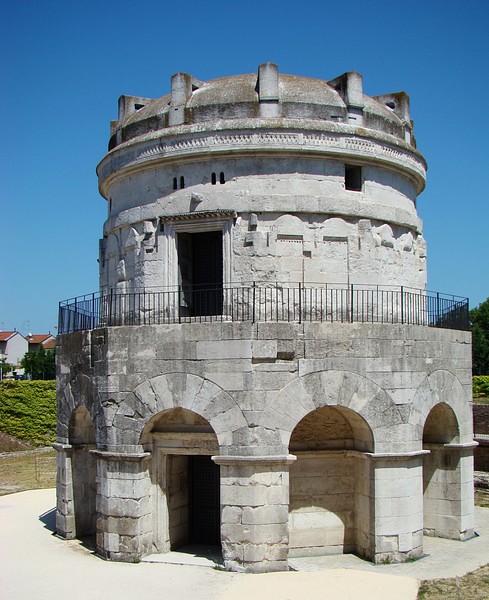
Aftermath & Legacy
Following his death, his grandson Athalaric succeeded him but, as he was only ten years old at the time, could not rule and so Theodoric's daughter Amalasuntha (l. c. 495-535 CE) took the throne as regent. She was an advocate of Roman sensibilities and culture and entrusted her son to Roman tutors who took advantage of their position to introduce the prince to heavy drinking which is said to have contributed to his early death in 534 CE; between 534-535 CE, Amalasuntha reigned as queen.
She had already opened negotiations with Justinian I in Constantinople to try to help secure her position but received no adequate response. She therefore called upon a trusted male cousin, Theodahad, to rule jointly with her and he came willingly. Amalasuntha then was arrested and exiled to an estate on the island of Martana where, under the orders of Theodahad, she was strangled by her servants in her bath in 535 CE.
Her son-in-law, Witigis (also known as Vitiges), then rose against Theodahad, had him assassinated, and became king in 536 CE. He ruled over Italy until his defeat and imprisonment by Belisarius in 540 CE. Following Belisarius' victory over Witigis, the Goths wished to crown him their new king but he, loyal to the emperor Justinian I, tricked the ring-leaders by pretending to accept and then had them all arrested. Belisarius then claimed the whole of Italy for Justinian I and the eastern Roman Empire.
Although Theodoric could not sustain his policies of religious tolerance nor his diplomatic expertise in dealing with Constantinople, he is still remembered as `the great' for his attempt to unify the populace under his reign into a single people and for, essentially, re-building Italy whether by planting trees, cultivating fields, constructing new buildings, or keeping hostile forces at bay. His vision of a kingdom of unified, though independent, nationalities living harmoniously under one rule was revolutionary for its time.
Even Alexander the Great, who, for the most part, allowed conquered regions to maintain some degree of autonomy as long as they supported his cause, did not encourage the kind of independent national pride the people under Theodoric were allowed. For thirty years Theodoric united the Goths and the Romans under his reign, maintained the peace, and worked for the well-being of his kingdom, raising Italy from ruin to stability and then to prosperity and even luxury.
He was buried with full honors in his mausoleum at Ravenna and, although this was later desecrated following Belisarius' victory over the Goths in 540 CE, it was repaired and still stands in the city in the present day. Theodoric is remembered as `the Great' for his revitalization of Italy and his efforts in ruling over a diverse population without attempting to assimilate either culture into the other.
His legacy continues into the present day as a great king who ruled his people wisely with the vision of a united kingdom of separate but equal populations. His later persecution of Trinitarian Christians is attributed to his emotional response to Justinian's anti-Arian policies in Constantinople rather than a clearly considered policy of discrimination and his memory continues to be honored for the vision he maintained and his efforts to make it a reality.
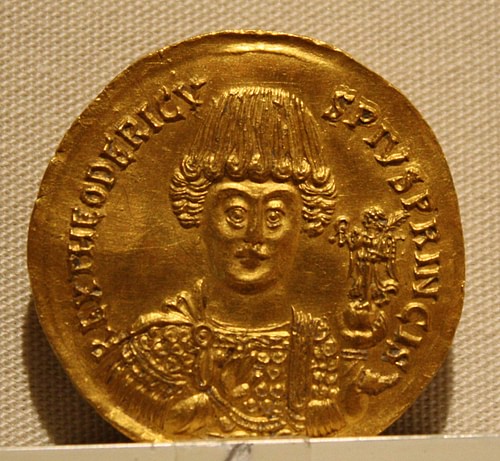
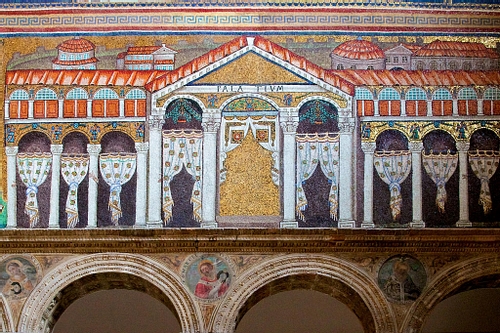
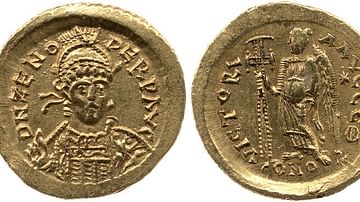
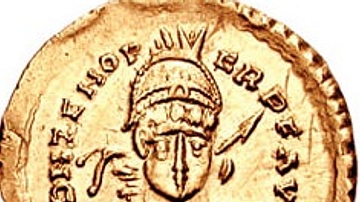

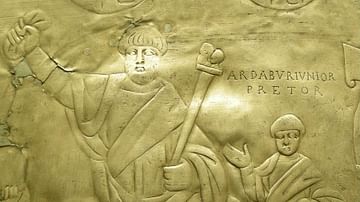
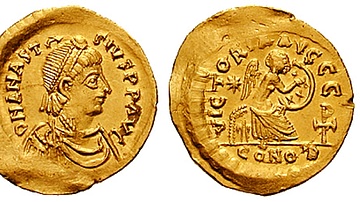
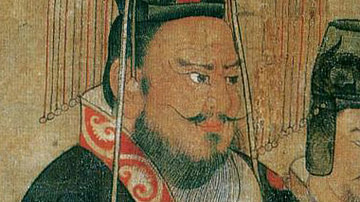



![The Mammoth Book of Eyewitness Ancient Rome- The History of the Rise & Fall of the Roman Empire in the Words of Those Who Were There by Lewis,Jon E.. [2003] Paperback](https://m.media-amazon.com/images/I/21Qb96MtUUL._SL160_.jpg)
